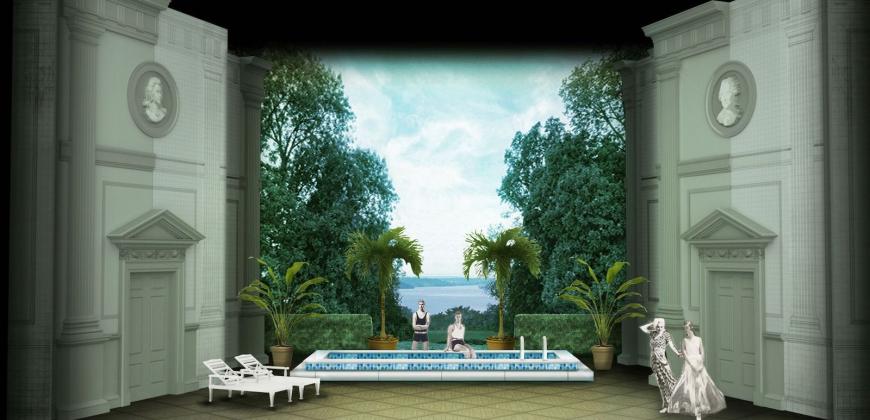SF Opera launches live broadcast with Fidelio and Così fan tutte
[ad_1]
After the quarantine and then streaming days of the COVID-19 pandemic, the San Francisco Opera is now entering a “hybrid era” of offering live performances and a live simulcast of performances.
Virtual tickets for SF Opera’s livestreams of his new Beethoven production Fidelio and that of Mozart Così fan tutte are priced at $ 25, available in line. Streams can only be seen live, there is no on-demand viewing, for October 14, 17, 20 Fidelio performances, and November 21, 23, 27 Così. To attend performances at the War Memorial, single tickets (no subscription) range from $ 26 to $ 398, available by calling (415) 864-3330 or in line.
Director Matthew Ozawa’s new production updates Fideliofrom an 18th century prison to a modern government detention center. Eun Sun Kim will lead performances on new sets and with projections by designer Alexander V. Nichols. And this will be the last time conductor Ian Robertson will lead the opera choir after a 35-year career.
Così is directed by Henrik Nánási, the cast consists of Nicole Cabell, Irene Roberts, Benjamin Bliss, John Brancy, Ferruccio Furlanetto and Nicole Heaston.
As new as the SF Opera livestreaming may be, the precedents go back several decades, first in the holy days of the Metropolitan Opera radio broadcasts – creating a legion of opera beginners – with Milton Cross (1931-1975) and Peter Allen (1975 – 2004) as hosts.
Locally, there is also something that dates back to 1932: the live broadcast of the brand new war memorial to the Civic Auditorium of Lucia di Lammermoor with Lily Pons during SF Opera’s inaugural season there.
(And even long before that there was Lisbon Edison subscription service, from 1885, with Boito’s Mefistofele on “théatrophone.”)
For the previous video, the Met was once again in the foreground, with its large-scale transmission of live performances in movie theaters all over the world, by gaining audiences and increasing revenues. In a single season, live HD broadcasts grossed over $ 17 million, or about 12% of the Met’s total revenue.
Locally, former Managing Director of SF Opera Creation by David Gockley of the Koret-Taube Media Suite and the initiation of live streaming of the performances in AT&T Park with free admission helped to increase attendance at the war memorial. Before the pandemic, the SF Opera 2019 livestream at the baseball stadium used the new $ 10 million Mitsubishi dashboard, spanning 10,700 square feet. (If you remember how close-ups of weird love scenes looked on ever-larger movie screens, this will give you the ultimate view.)
During the pre-pandemic days of major cuts, the Koret-Taube Media Suite was risk of being dismantled, but apparently it is still used to support streaming.
Could opera reproduce the enormous growth of professional sports stimulated by the availability of television viewing? In opera, movie theater streaming has been a huge success, but maybe not in creating a new audience. When I went to a screening, I usually saw people I knew from the National War Memorial.
At the uncertain start of the sport, we feared “why pay at the stadium when you can watch it for free at home?” But even early on, in 1950, when the Los Angeles Rams and Washington Redskins became the first NFL teams to see all of their games televised, the surge began and football quickly overtook baseball (and wrestling. previously more popular and lucrative. .
When SFCV asked SF Opera for comment on the financial and audience development aspects of the live broadcast, Managing Director Matthew Shilvock provided a statement that did not directly answer the question:
“There is so much joy and dynamism in the return of the arts. We want to welcome as many people as possible into this experience and are excited to broadcast live operas from our stage across the world.
“The San Francisco Opera is entering an exciting new chapter under the musical direction of Eun Sun Kim, with a season of productions all built right here in the Bay Area. Anyone in the world can now watch our art live from the War Memorial Stage and feel all the visceral energy you get knowing it’s happening in real time, right in the heart of San Francisco. It’s a time of new possibilities, and we’re so happy to expand the community of San Francisco opera enthusiasts in this way. ”
Journalist and sports enthusiast Harvey Steinman addressed the issue in detail:
Live sports on television were common when I was young. I remember watching live home baseball games on television in the early 1960s (black and white, and only the San Francisco and Los Angeles games). It didn’t seem to affect attendance dramatically.
However, the NFL was less generous. The games could only be streamed locally if tickets ran out, and that persisted for decades. I remember driving to San Diego from my home in Los Angeles to watch the first Super Bowl on TV because it wasn’t sold out.
Finally, two things became clear. There was a synergy to be harnessed between visibility and getting people to buy season tickets and seats for the games. And the broadcasters paid a lot of money for the rights to broadcast the games, which turned out to be a better deal for the NFL and individual teams because they had a guaranteed source of income.
Opera companies showing their own performances will not have a guaranteed source of income, but it is an additional source of income at a time when some of their audiences are still reluctant to sit in an opera house with hundreds of players. others. And it increases exposure and can create more fans.
[ad_2]

